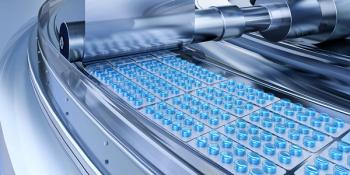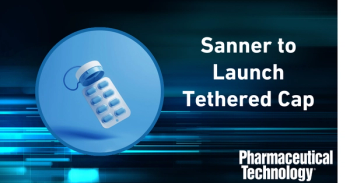
- Pharmaceutical Technology-07-02-2016
- Volume 40
- Issue 7
Exploring the Use of Aseptic Spray Drying in the Manufacture of Biopharmaceutical Injectables
Aseptic spray drying provides an alternative to lyophilization as an enabling stabilization technology for parenteral biologic formulations.
Parenteral formulations are increasingly capturing a bigger share of the pharmaceutical market, driven by the booming biologics sector. The production of these injectables is, nonetheless, complicated and requires specialized equipment and facilities. “The biggest challenge in aseptic processing is to maintain sterility,” says Sam de Costa, stabilization project manager at Nova Laboratories, “especially if the manufacturing process involves novel or complex steps.” He highlights that FDA, the European Medicines Agency (EMA), and the World Health Organization have laid out well-defined regulatory requirements for parenteral drug products. “The main focus is on ensuring product safety because parenteral preparations bypass the patient’s natural defense mechanisms,” de Costa explains. “Sterility assurance and control of pyrogens is, therefore, particularly important.”
According to de Costa, terminal sterilization is the preferred approach in drug manufacture. “Unfortunately, many drug substances, particularly biologics, cannot withstand exposure to the elevated temperatures or irradiation required as part of a terminal sterilization process,” he notes. “In such cases, aseptic manufacture is the only available option.” In this article, de Costa speaks to Pharmaceutical Technology about aseptic spray drying as an alternative option for stabilizing parenteral formulations.
Aseptic spray dryingPharmTech: Can you explain the concept of aseptic spray drying for parenteral formulations?
de Costa: Aseptic spray drying converts a liquid formulation into a dry powder suitable for parenteral applications without the need for terminal sterilization. The aseptic powder can then be filled into different presentations including vials or medical devices. Reliable spray drying systems adopted to operate under cGMP sterile conditions are essential within a robust manufacturing facility. In-depth knowledge in aseptic manufacturing techniques will be essential to successfully maintain such a facility.
Aseptic spray dryingversus lyophilizationPharmTech: Why is aseptic spray drying not traditionally used compared to lyophilization?
de Costa: Lyophilization has been the established technique and the method of choice for biologics manufacture for number of years. Most contract manufacturing organizations (CMOs) have freeze-drying capabilities, thus contributing to its popularity.
The aseptic spray drying technology was pioneered by Nova Laboratories more than nine years ago. This technology has received positive response from regulators, with FDA and EMA approving, in 2015, the first aseptically spray-dried biologic, Raplixa (developed by ProFibrix BV). This drying methodology can be combined with gassed isolators to provide a reliable and continuous processing option for biologics.
With the regulators’ acceptance of this technology, we are confident that the application of aseptic spray drying in biologics manufacture will increase in the coming years, making this approach a viable alternative to lyophilization.
PharmTech: How does aseptic spray drying compare with lyophilization?
de Costa: Spray drying has number of advantages over lyophilization. Lyophilization is a batch process, therefore, the production batch size is limited by the capacity of the lyophilizer. In contrast, spray drying can be operated continuously, sometimes even over a number of days, to achieve the required quantities of product. This flexibility will ultimately help to reduce the batch cost, hence, driving down the unit cost of the finished biologic. Continuous processing is especially useful for commercial manufacturing of products required in high quantities, and this is one area where spray drying can be applied.
When choosing a suitable drying method, the compatibility of the drug product needs to be assessed carefully. For example, the freezing step during lyophilization can sometimes affect the formulation in a negative way. Spray drying is a much gentler process, making it compatible with biologics manufacture.
Moreover, the particle-engineering capability of spray drying is an advantage over freeze drying. Advances in liquid atomization and powder-collection technologies have enabled us to manufacture sterile powder with desired characteristics. For example, by manipulating the surface area or morphology of spray-dried particles, dissolution rates can be improved. This capability is, however, not available for a lyophilized product. If required, encapsulation or particle coating is another feature of spray drying that can facilitate different drug-release or dissolution profiles.
A spray-dried product is by nature a powder. This characteristic allows the formulation to be powder-filled into final containers without further processing. A lyophilized product, on the other hand, will have to be milled or sieved first before undergoing the powder-filling step. Spray drying eliminates the need for an additional milling or sieving step, thus reducing manufacturing costs. Quality concerns such as product uniformity can also be solved by spray drying. Spray-dried powders can be engineered to have good flowability and compactability, which then enable easy filling into various containers including vials, pouches, and medical devices.
Both lyophilization and spray drying are scalable technologies. Maintaining a consistent product quality across all production scales would be paramount for both technologies. An example is Nova’s experience in scaling up the manufacturing process for Raplixa, a spray-dried product. This process was initially converted from a low-bioburden spray-drying process to a fully aseptic spray-drying process. It was subsequently scaled up from clinical trial manufacturing scale to commercial scale at our facilities. As described previously, one of the main reasons for the cost difference is the mode of processing, (i.e., continuous processing helped to bring the unit cost down).
Compatibility testingPharmTech: How do you assess compatibility of a product to aseptic spray drying?
de Costa: The suitability of a product to aseptic spray drying should be assessed at an early stage of the development program. At Nova, we conduct early stage feasibility studies to demonstrate compatibility of the technology to the biologic, but compatibility to other aspects of sterile manufacture will also be evaluated as part of this process.
A range of biopharmaceutical products have been evaluated, from vaccines, monoclonal antibodies, and hormones to therapeutic peptides/proteins and live biologic platforms such as virus vectors. Some of these products were assumed to be extremely fragile and thermo-sensitive but proved to be compatible with spray-drying technology.
Thermo-sensitive formulationsPharmTech: Can thermo-sensitive biopharmaceuticals be spray dried successfully? What are the key considerations when spray drying a thermo-sensitive biologic formulation?
de Costa: Yes, a range of biopharmaceuticals have been successfully evaluated before. Live viral or bacterial vectors have to be typically stored at -80 °C. The stabilized products, using spray drying, are stable at 2-8 °C or at room-temperature storage. This stability could be achieved because the drying method used was gentle to the product.
During spray-drying process optimization, the drying temperature can be adjusted to suit the sensitivity of the product. Other process parameters such as drying gas rate, atomization pressure, and product holding temperatures should be optimized to yield best results.
PharmTech: Why is there a misconception that thermo-sensitive biopharmaceuticals cannot be spray dried successfully?
de Costa: The misconception arises from the use of higher temperatures as part of the process compared to lyophilization. However, in reality, the product is not actually exposed to these temperatures during drying. As the atomized droplet evaporates within the drying chamber to create the powder, this step generates an evaporative cooling effect around the droplet/powder particle, resulting in a “cooler” environment around the product. This feature, in combination with the short resident time of a dried particle within a drying chamber, reduces the risk of the product being exposed to elevated temperatures. Similar to lyophilization, in most instances, bulking/stabilizing excipients can be added to the formulation for spray drying, which can further provide thermal protection during processing and storage.
An enabling stabilizing technologyPharmTech: Can you provide an example of how aseptic spray drying is used as an enabling stabilizing technology?
de Costa: In our experience, Raplixa is the best example of explaining the concept of aseptic spray drying. Raplixa is a hemostat product consisting of fibrinogen and thrombin developed by Profibrix BV. Due to their natural states, fibrinogen and thrombin cannot be processed together in liquid format. The two biologics were, therefore, aseptically spray dried individually using optimum processing conditions. Particle engineering was applied to obtain suitable particle-size distributions, and the resulting powder was blended and powder-filled under sterile conditions. The ability to engineer the particles to suit the application enabled us to develop this novel pharmaceutical drug successfully. This ability to aseptically spray dry the biologic product avoided the need for terminal sterilization, offering a quality and cost advantage.
Article DetailsPharmaceutical Technology
Vol. 40, No. 7
Pages: 24–27
Citation
When referring to this article, please cite it as A. Siew, “Exploring the Use of Aseptic Spray Drying in the Manufacture of Biopharmaceutical Injectables," Pharmaceutical Technology 40 (7) 2016.
Articles in this issue
over 9 years ago
FDA and Manufacturers Intensify Concerns about Data Integrityover 9 years ago
Planning a Biologics Facility Start Upover 9 years ago
Solid-Dosage Packaging Trendsover 9 years ago
Quality System for a Regulatory Affairs Departmentover 9 years ago
Data Integrity Challenges in Manufacturingover 9 years ago
Bio/Pharma Funding Challenges Could Hurt CDMOs in 2017over 9 years ago
Cleaning Bioreactors and Fermenters with CIP Systemsover 9 years ago
Maximize Efficiency in Tooling Maintenanceover 9 years ago
Recognizing Pharma Industry Excellenceover 9 years ago
Expanding the Chiral ToolboxNewsletter
Get the essential updates shaping the future of pharma manufacturing and compliance—subscribe today to Pharmaceutical Technology and never miss a breakthrough.





